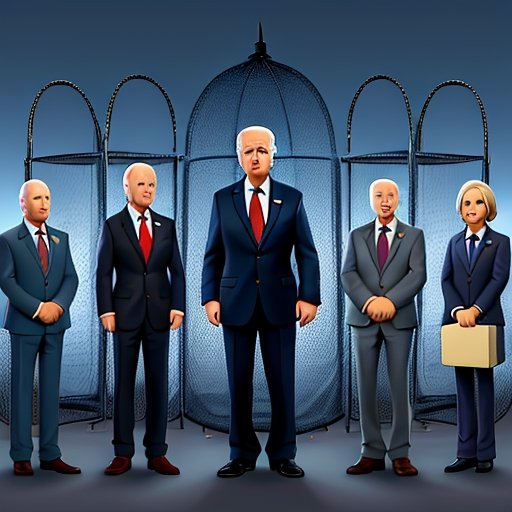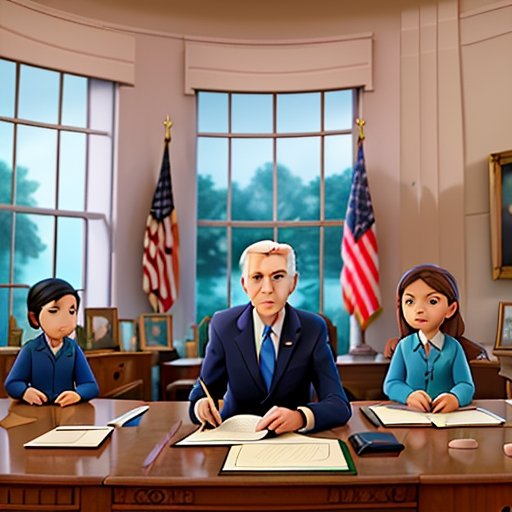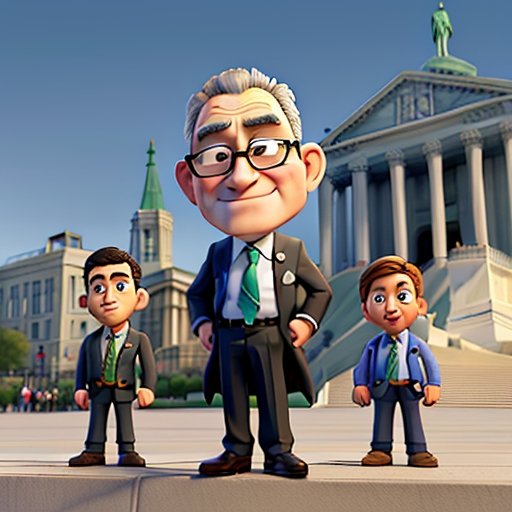America’s heading toward another historic election in 2024, and one scenario stands out like a beacon in the fog: Donald Trump reclaiming the Oval Office. It sounds simple enough—he wins, he governs—but in today’s political climate, nothing is ever that straightforward. Trump’s victory, while celebrated by his loyal base, could open the door to a slew of challenges that might make it feel like a win on paper but a loss in practice. From legal battles over his candidacy to civil unrest and economic volatility, the consequences could be seismic.
Sill, amid all this upheaval, there’s a silver lining. The fractures exposed by Trump’s return could actually pave the way for something new, something desperately needed—a unity movement that breaks the cycle of polarization. This essay will take a closer look at what happens when Trump wins, the potential fallout, and how, ironically, that very chaos could lead to a political awakening for the nation.
The Changing Political Landscape
When Trump takes the 2024 election, we won’t see a quiet acceptance from the political opposition. The media will explode, Democrats will raise every possible legal objection, and we’ll likely see challenges using the 14th Amendment to argue Trump’s ineligibility to serve. There’ll be lawsuits, recounts, protests—the whole nine yards. But when the dust settles, odds are Trump will be sitting in the White House again. The problem is that getting there will feel less like a victory lap and more like a siege. The left will view his win as illegitimate, regardless of how clean the electoral math looks. The right, on the other hand, will claim vindication, fueling their frustration with a system they feel is rigged against them.
Potential Consequences of a Divisive Election
- 🚨 Increased political polarization
- 💸 Economic uncertainty
- 😵 Possible civil unrest
- 📜 Legal challenges to election results
- 🛡 Strain on government institutions
But this won’t just be a battle between voters; it’s going to extend deep into the government itself. Trump’s first presidency already saw friction with federal agencies and the judiciary. Imagine round two, with those same institutions even more dug in against his leadership. We’re talking gridlock at a new level—investigations, court battles, and efforts to block every major move he tries to make. Sure, he’ll have his executive orders, but governing through a thick fog of resistance? It’s going to slow everything down to a crawl. If you think Congress is dysfunctional now, just wait.
The Trust Conundrum
Let’s not sugarcoat it—if Trump wins, civil unrest is almost guaranteed. We’re not talking about polite disagreements over brunch; we’re talking about street protests, media hysteria, and likely clashes between groups on the fringes of both sides. But while it might seem like the country’s going to tear itself apart, the reality is that most Americans won’t engage in outright violence. Sure, the footage of protests will dominate the news cycle, and cities like Portland and New York could see flare-ups, but widespread civil war? That’s a stretch. Most of us will stay glued to our smartphones, shaking our heads but going about our daily lives.
What might be more unsettling is the economic fallout. Markets hate uncertainty, and a contested election with legal challenges flying left and right is bound to make investors nervous. A temporary market drop is likely, driven by fear of unrest and fears about Trump’s unpredictability on trade, especially with China and Europe. But here’s the kicker—once the dust settles and the business-friendly policies start rolling out, the economy will stabilize. The stock market has a way of looking past political noise when tax cuts and deregulation are on the table. That said, if Trump reopens old trade wars or pushes too hard on isolationist policies, we could see some long-term volatility, especially for global markets.
The Cold Civil War: Gridlock and Polarization on Steroids
No matter how things shake out, a Trump win will solidify one thing—the cultural divide in America will grow wider. But rather than armed conflict, we’re looking at what some call a “cold civil war.” Red and blue states are going to act more like independent nations than united ones, with places like California and New York doing everything they can to block Trump’s federal policies. Texas and Florida, meanwhile, will lean all in, fully embracing his leadership. This patchwork governance could lead to states effectively ignoring federal mandates they don’t like, creating a fractured version of the United States in practice, if not in name.
The media, of course, will be gasoline on the fire. Conservative outlets will paint Trump as the last hope for American greatness, while liberal media will push the narrative that democracy is under attack. Social media will follow suit, and Americans will continue living in ideological bubbles where compromise is not only impossible—it’s seen as betrayal. The more extreme voices will get the loudest megaphones, while the vast middle ground of reasonable people who just want stability will feel abandoned by both parties.
The Unity Party: A Beacon of Hope
Here’s the twist: the very chaos that comes with Trump’s second term could be the spark that ignites a new political movement—a unity party. As disillusionment with both the Republicans and Democrats grows, more and more Americans are finding themselves politically homeless. They’re tired of the far-left and far-right dragging the country in opposite directions. They want solutions, not slogans. Enter the idea of a unity party, one that bridges the gap between the extremes and focuses on what matters—jobs, healthcare, education, infrastructure. You know, the stuff that affects our day-to-day lives.
This isn’t some pipe dream. The conditions are ripe for a political realignment. We’re already seeing cracks in both major parties. The Democrats have their progressive wing pulling them left, while Republicans are grappling with their own internal fractures between Trump loyalists and traditional conservatives. A unity party could be the middle ground that pulls in moderates from both sides. Imagine a political force that prioritizes compromise, pragmatism, and the good of the country over ideological purity. It’s not about watering down beliefs, but about finding common ground on core issues. And it’s not a long shot—people are fed up with gridlock, and a party that offers real solutions could catch fire fast. And it may boil down to which side gets there first.
Key Principles of a Potential Unity Party
| Principle | Description |
|---|---|
| Moderation | Balancing diverse viewpoints |
| Pragmatism | Focusing on practical solutions |
| Transparency | Open and accountable governance |
| Bipartisanship | Collaboration across party lines |
| Civic Engagement | Encouraging active citizen participation |
When a unity party gains traction, it could fundamentally change the political landscape in America. For starters, it would give a voice to the millions of voters who feel ignored by the current system. These aren’t extremists; they’re everyday Americans who want their government to function. They want their leaders to work together, not constantly fight. A unity party could tap into that frustration and turn it into something productive. It would appeal to moderates, independents, and even disillusioned members of both major parties. And in doing so, it could reshape how we think about politics.
Beyond just winning elections, the unity party would be about restoring trust—trust in government, trust in institutions, and trust in each other. Right now, the biggest casualty of the current political climate is faith in the system. People don’t believe their leaders are working for them, and why would they? The parties spend more time fighting each other than solving real problems. But a unity party could change that by focusing on pragmatic governance, transparent policies, and a commitment to accountability. In a time when cynicism is at an all-time high, this party could be the antidote, showing Americans that government can still work when it’s driven by common sense rather than partisan bickering.
Conservative values have long endorsed the strength of community and the wisdom in learning from history’s lessons. The emergence of a unity-driven political movement with Republicans taking the lead could harness this wisdom and foster pragmatic action, countering the allure of progressive policies that sometimes overlook practicality for ideology. Returning that trust to government and emphasizing transparency could open the door to a stronger national identity.
Conclusion: A Turning Point for America
A Trump victory in 2024 might initially look like a recipe for chaos, division, and gridlock. And it probably will be—at least in the short term. But out of that mess, there’s an opportunity for something better. The dysfunction of our current system has left a vacuum, and a unity party could fill it. By offering a path forward that prioritizes solutions over ideology, this new political force could bring America back from the brink of endless division. In the wake of Trump’s second term, the unity party could be the breath of fresh air the country needs—one that helps us rediscover what it means to work together for the common good.
It won’t be easy, but then again, nothing worth doing ever is.






